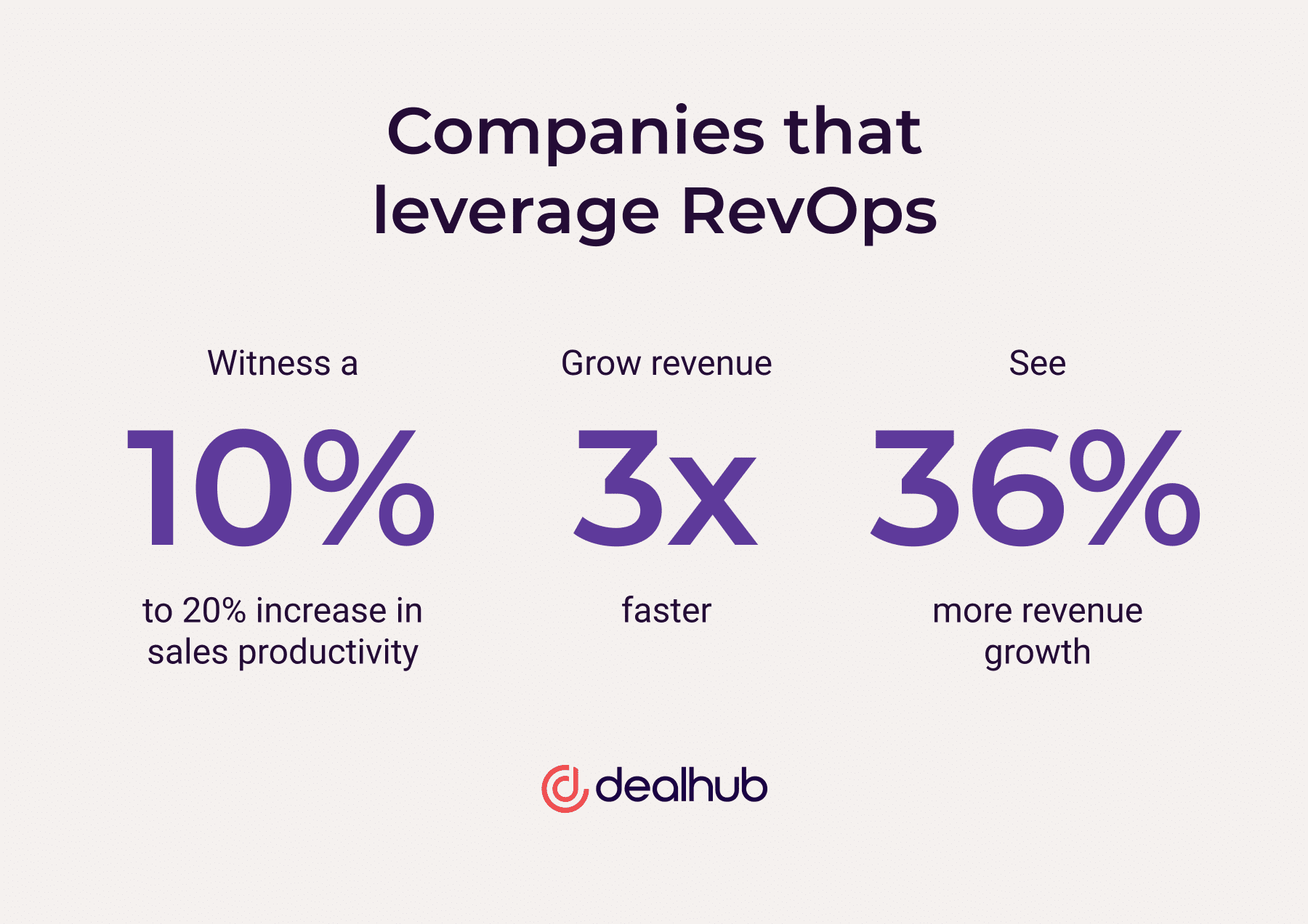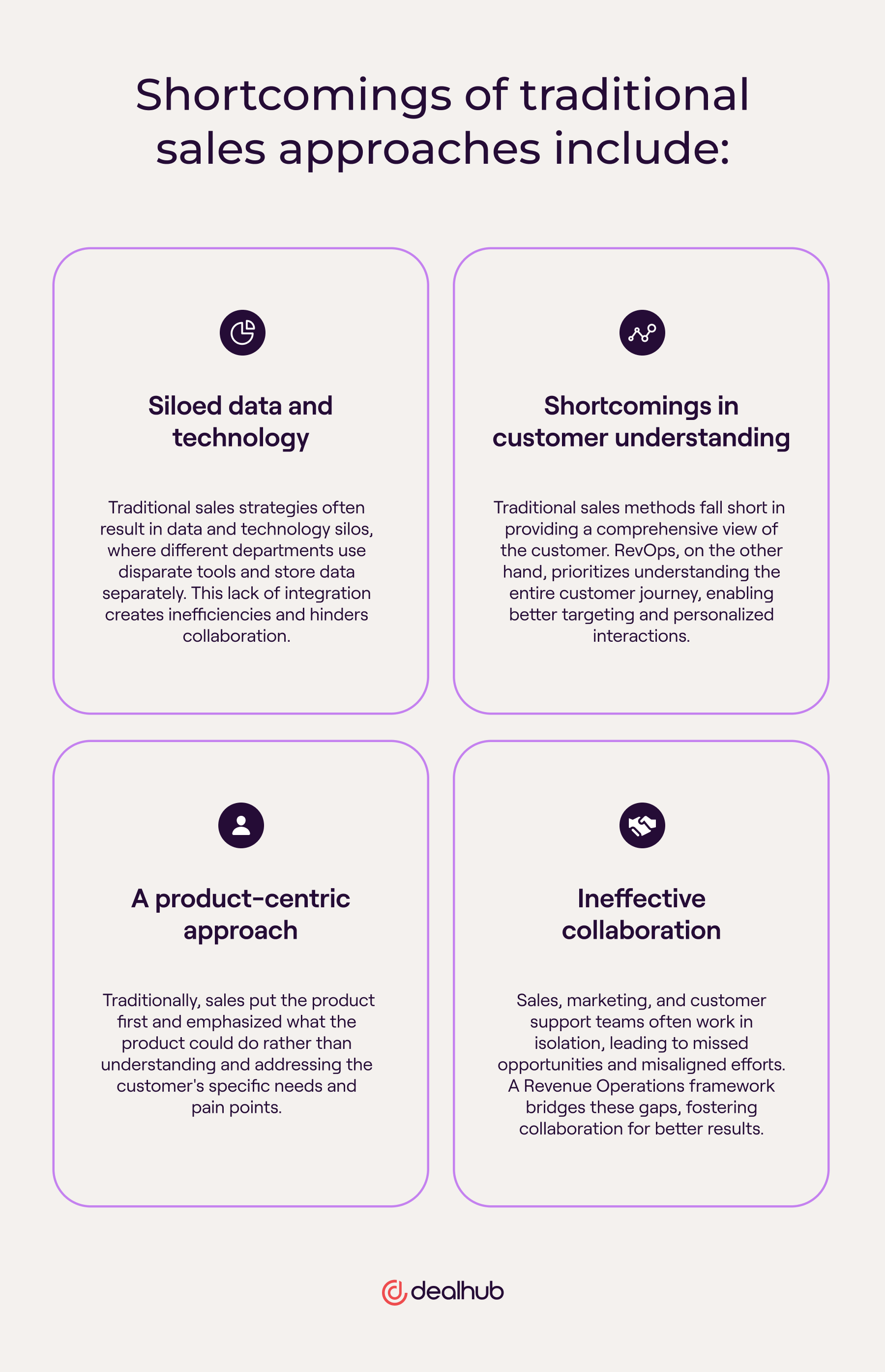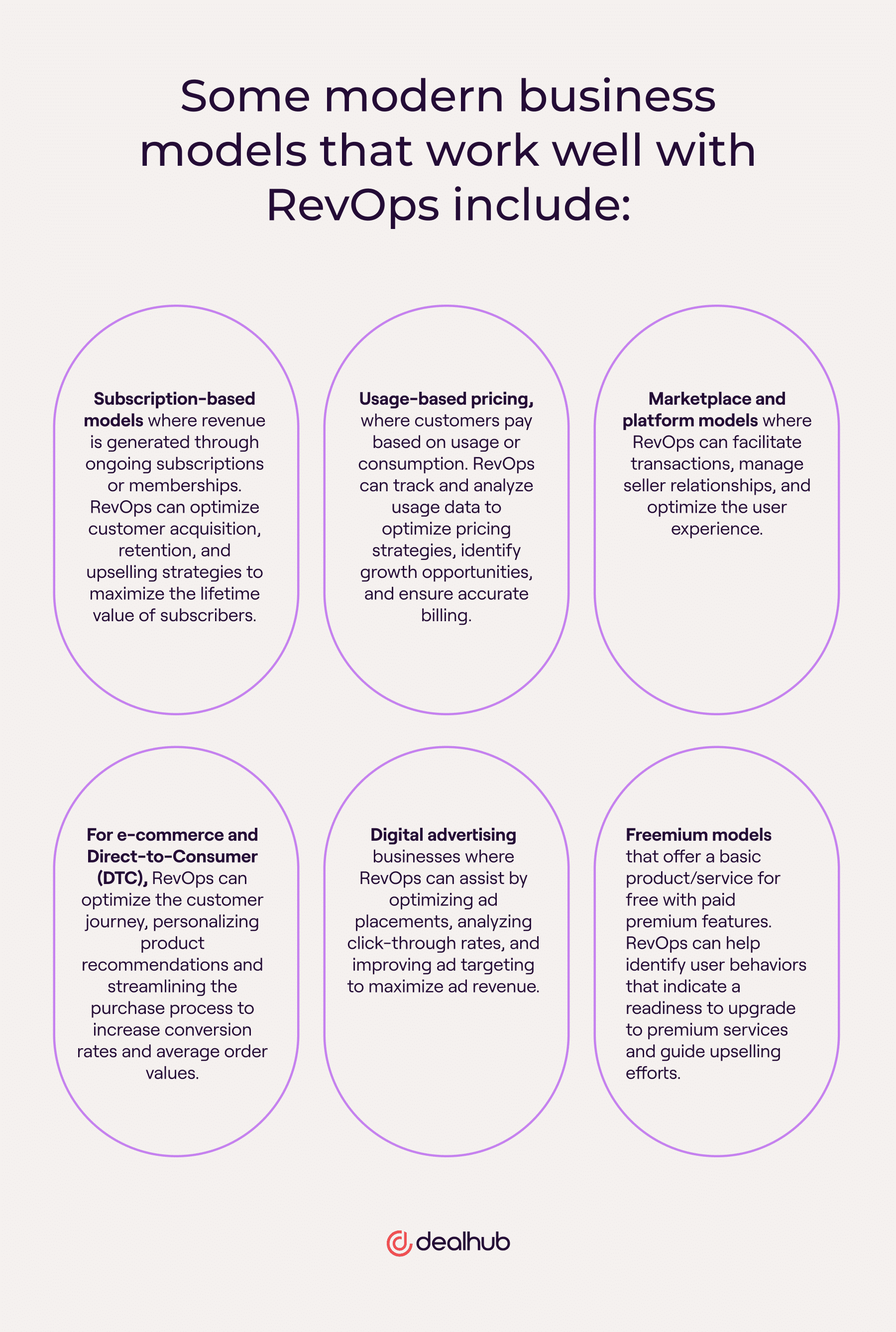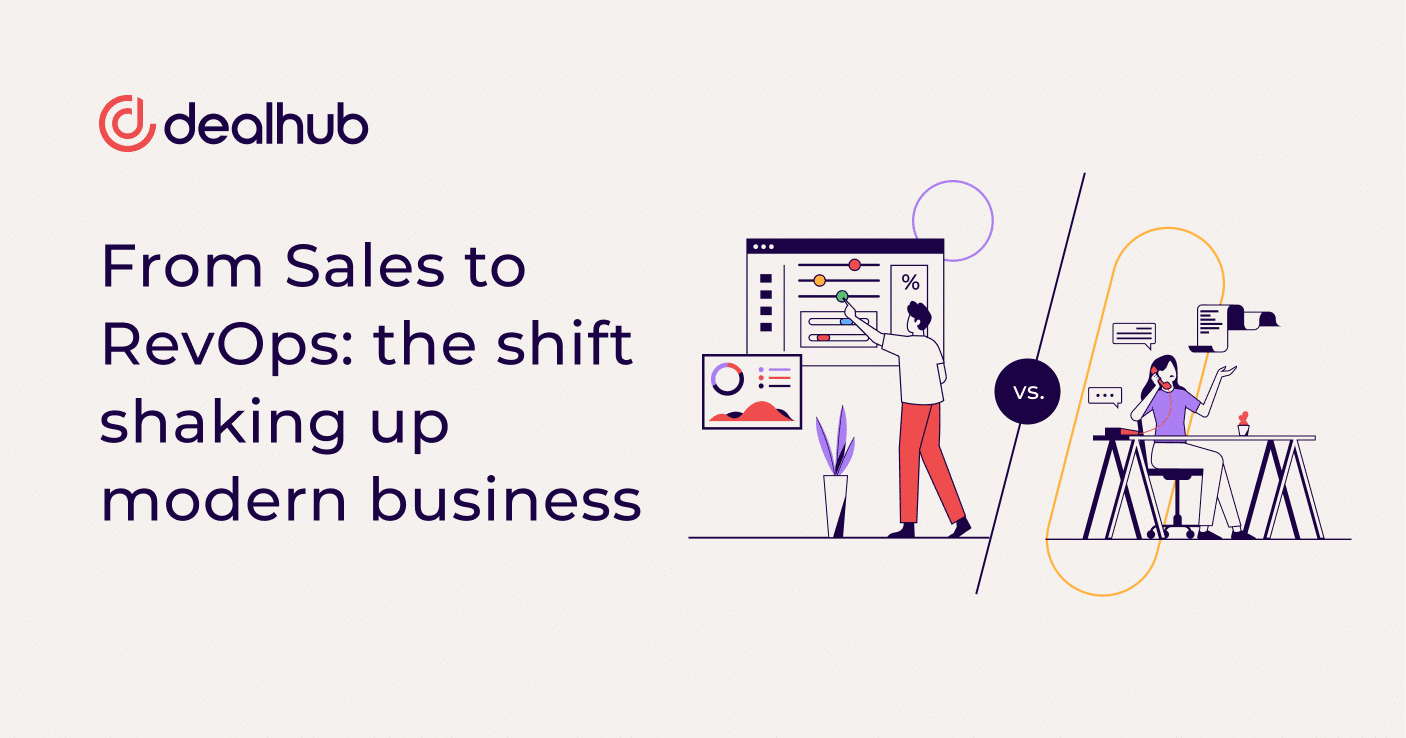One of the most significant trends in recent years has been the rise of Revenue Operations (RevOps). This holistic and cross-functional approach transforms how organizations think about revenue generation. According to Forbes, RevOps is one of the fastest-growing jobs in the United States, and for a good reason. Companies that leverage RevOps:
- Witness a 10% to 20% increase in sales productivity
- Grow revenue 3X faster
- See 36% more revenue growth

So, let’s delve into the critical distinction between RevOps and traditional sales approaches and also explore the evolving landscape of revenue generation so we can understand why adopting a RevOps mindset is a game-changer in today’s competitive market. By the end of this blog, you’ll understand a bit more about why RevOps translates into sustainable, predictable growth.
Understanding Revenue Operations
At its core, RevOps is a strategic approach that harmonizes marketing, sales, customer support, and revenue management to maximize revenue growth and operational efficiency. It’s not just a department; it’s a mindset that recognizes generating revenue is a cross-functional endeavor.
Key components of a successful RevOps framework
A successful RevOps framework comprises of several essential components:
Data integration. RevOps relies on a unified data ecosystem where information flows seamlessly between departments. This eliminates data silos and ensures that everyone has access to the same up-to-date data.
Process optimization. Revenue Operations identifies and streamlines critical revenue-related processes, from lead generation to customer retention. This optimization enhances efficiency and reduces friction in the customer journey.
Technology alignment. RevOps ensures all teams use compatible tools and technologies like:
- CRM
- CPQ
- eSign platforms
- Billing solutions
- Business intelligence tools
This alignment enables teams to work cohesively and eliminates the friction caused by incompatible software.
KPI alignment. In a RevOps-driven organization, key performance indicators (KPIs) are aligned across departments, fostering a shared focus on revenue-related goals.
Leaving the traditional sales approach behind
While traditional sales approaches have served businesses well in the past, they have limitations that hinder success in today’s dynamic market.
Shortcomings of traditional sales approaches include:
Siloed data and technology. Traditional sales strategies often result in data and technology silos, where different departments use disparate tools and store data separately. This lack of integration creates inefficiencies and hinders collaboration.
Shortcomings in customer understanding. Traditional sales methods fall short in providing a comprehensive view of the customer. RevOps, on the other hand, prioritizes understanding the entire customer journey, enabling better targeting and personalized interactions.
A product-centric approach. Traditionally, sales put the product first and emphasized what the product could do rather than understanding and addressing the customer’s specific needs and pain points.
Ineffective collaboration. Sales, marketing, and customer support teams often work in isolation, leading to missed opportunities and misaligned efforts. A Revenue Operations framework bridges these gaps, fostering collaboration for better results.

The shift: Revenue Operations transformation
RevOps represents a paradigm shift in how organizations think about revenue generation. The past approach to marketing and sales revolved very much around each department working independently towards its own internal goals. However, modern RevOps essentially flips the script. Instead of being siloed off from each other, teams look for ways to collaborate more closely and align their goals around a greater focus: multi-faceted revenue creation. Revenue Operations transforms businesses via:
Alignment for unified revenue focus. RevOps brings together different departments, aligning them around a singular goal—revenue generation. This alignment eliminates internal conflicts and ensures everyone works towards the same objective.
Optimizing processes for growth. By streamlining processes, RevOps reduces inefficiencies and friction points in the customer journey. This optimization not only enhances customer satisfaction but also accelerates revenue growth.
Synchronizing data across the customer journey. RevOps prioritizes data integration, ensuring that insights from marketing, sales, and customer support insights insights are shared seamlessly. This comprehensive view of the customer journey enables more informed decision-making.
Customer-centric sales. By putting customers at the center of sales and profoundly understanding what a customer needs (via data and analysis), RevOps can enable tailored offerings (using tools like CPQ), so customers receive customized, personalized experiences that drive customer satisfaction, retention, and future sales.
Sales enablement. RevOps isn’t just good for customers; it’s good for sales representatives, too! Sales representatives show their value by intimately understanding the client’s market and finding solutions that align with a customer’s unique requirements. RevOps enables sales teams to grow professionally by giving representatives the time, tools, and training they need to become industry experts.
Cross-selling and upselling. RevOps promotes cross-functional collaboration, enabling sales teams to leverage insights from marketing, customer support, and other departments. A holistic view of the customer journey can pinpoint opportunities for cross-selling and upselling to increase an average deal size.
The evolving landscape of revenue generation
The business landscape continually evolves, and RevOps must adapt to stay relevant. Here are some critical aspects of this evolution:
Adapting to new revenue models
RevOps is flexible and adaptable, making it well-suited for emerging revenue models. RevOps can be tailored to fit various business models, ensuring that revenue streams remain robust.
Some modern business models that work well with RevOps include:
- Subscription-based models where revenue is generated through ongoing subscriptions or memberships. RevOps can optimize customer acquisition, retention, and upselling strategies to maximize the lifetime value of subscribers.
- Usage-based pricing, where customers pay based on usage or consumption. RevOps can track and analyze usage data to optimize pricing strategies, identify growth opportunities, and ensure accurate billing.
- Marketplace and platform models where RevOps can facilitate transactions, manage seller relationships, and optimize the user experience.
- For e-commerce and Direct-to-Consumer (DTC), RevOps can optimize the customer journey, personalizing product recommendations and streamlining the purchase process to increase conversion rates and average order values.
- Digital advertising businesses where RevOps can assist by optimizing ad placements, analyzing click-through rates, and improving ad targeting to maximize ad revenue.
- Freemium models that offer a basic product/service for free with paid premium features. RevOps can help identify user behaviors that indicate a readiness to upgrade to premium services and guide upselling efforts.

Greater emphasis on customer experience
In today’s sales landscape, customers have more choices than ever before. The secret to RevOps’ success is recognizing that exceptional customer experiences are essential for building loyalty and driving repeat business. By focusing on the customer journey, RevOps enables organizations to provide tailored, personalized experiences that set them apart from the competition.
Increased focus on data and revenue forecasting
Data is the lifeblood of RevOps. With the correct data and analytics tools, organizations can make data-driven decisions, accurately forecast revenue, and adapt to changing market conditions. RevOps teams leverage data to gain insights into customer behavior, market trends, and sales performance, enabling more accurate revenue expectations.
Many KPIs can assist RevOps in analyzing their sales strategies, including:
- Customer Lifetime Value (CLV): This KPI assesses customers’ long-term value and guides retention and upselling strategies.
- Sales cycle length: Reducing the sales cycle accelerates revenue generation and improves efficiency.
- Lead-to-customer ratio: This metric helps determine the quality of leads and lead nurturing strategies by calculating the ratio of leads acquired to customers closed.
- Average Deal Size (ADS): ADS calculates the average value of closed deals. RevOps teams aim to increase the average deal size through upselling, cross-selling, and strategic pricing.
- Net Promoter Score (NPS) and Customer Satisfaction (CSAT): NPS and CSAT gauge customer sentiment and loyalty. High scores indicate satisfied customers.
- Lead response time: This measures how quickly sales teams respond to inbound leads or inquiries. Faster response times often lead to higher conversion rates.
Implementing automation and machine learning
Automation and machine learning are game-changers in RevOps. These technologies enable teams to become more focused and efficient by automating routine tasks, such as lead scoring and follow-ups. Machine learning algorithms can wade through massive amounts of data to identify trends, assisting organizations in making smarter revenue-related decisions.
RevOps: the key to sustainable growth
The shift from traditional sales approaches to RevOps is not just a trend—it’s necessary for modern organizations looking to thrive in a competitive market. RevOps transforms how organizations generate revenue by fostering alignment, optimizing processes, and synchronizing data across the customer journey.
By adapting to new revenue models, prioritizing customer experience, and leveraging data and automation, businesses can position themselves for sustainable growth. The RevOps mindset is the key to unlocking the full revenue potential of your organization.
In a world of constant change, adopting RevOps is a forward-looking strategy that ensures your business remains agile, competitive, and primed for success. So, don’t just follow the crowd; lead the way with a Revenue Operations framework and watch your business thrive in the modern era of revenue generation.





